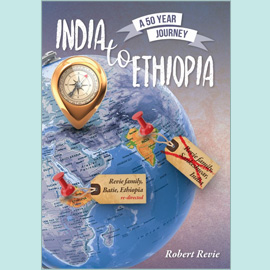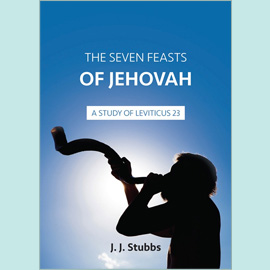Perhaps the most recent revival movement in any one locality in the British Isles took place on the island of Lewis during 1949–1952. It was not confined to one part of the island, nor was it an isolated episode. It really followed deep spiritual awakenings which had occurred some ten years before.
Lewis Today
In what can now be described, sadly, as post-Christian Britain, Lewis even yet retains much of the character of a God-fearing society, with strong religious feelings established by habit, tradition and conviction. The percentage of people throughout Lewis who attend what may be called Protestant churches is far greater there than anywhere else in the UK, although it is diminishing. Both the Church of Scotland, and the Free Church in its various branches, retain strongly-held, fundamental, Bible-based beliefs. One evidence of this is the continued observance of the Lord’s Day as a day of rest and worship. It is one of the things which new visitors find strange, though some find it welcome! Hardly any shops or similar facilities open on Sundays, and a recent proposal by the local council to open Sports facilities on Sundays was defeated. Many still call the Lord’s Day the Sabbath. In Stornoway (the main town and administrative centre), large numbers of Christians will be found meeting regularly in several different churches. Unique among them is the Gospel Hall, in a prominent location called Bayhead, where a small assembly maintains its witness for the Lord Jesus.
Lewis Long Ago
Because of its remoteness, Lewis was largely uninfluenced by events on the mainland. A clan system persisted, and with its own loved Gaelic language barrier, integration with the rest of Britain was slow. The people earned what meagre income they could from small crofts and some fishing; exploited too often by absent landlords and their factors. This remoteness also meant that evangelical awakenings in other places passed them by. The first Gaelic Bible was not published until 1801. Until the beginning of the 19th century, most of the Outer Hebrides was unreached by the Gospel. A nominal and careless type of religion existed in many places. This began to change around 1822, when Finlay Munro and Alexander MacLeod came to Uig on the remote Atlantic coast of Lewis. They found the people in spiritual darkness. Although hundreds attended ‘communion’ periodically, they did so with scant regard to its meaning or to their state before God. Under MacLeod’s powerful ministry, great soul-searching took place until, in June 1827, at the first communion for two years, only 20 people were at the table. Within a year a great revival affected the region, and converts of all ages made up a crowd of 9,000 people who came to the 1828 summer communion. They walked on rough paths over moors and peat bogs, some for up to 20 miles, now seeking God in earnest. This was the first real spiritual awakening in Lewis. After this, in the northern parish of Ness, Finlay Cook led many to Christ, while in Harris, in the south, John Morrison preached in many villages - a crowd of 7,000 listened at one open air meeting in Tarbert, and many were converted. John MacDonald, often called ‘the Apostle of the North’, also visited Harris twice, and further blessing followed. The Uig revival had well and truly spread through ‘the long island’.
The 20th Century
Before the start of World War I, some parts of Lewis were blessed with a revival of true Christianity, and many converts were added to local congregations. Between the wars this continued on a lesser scale, although there was actually more blessing in the Free Church in the districts of Ness and Point. In 1939 a significant fresh wave of revival started in Carloway on the west coast, where for five years God had already been blessing many with salvation. But now it spread to other areas. Throughout the island huge numbers of souls were saved. Here are some comments from that time:1
“The churches were full, and the solemnity at those services was awe-inspiring, as the Word of God went as fiery darts to the consciences and hearts of the unconverted.”
“Both minister and congregation were so visibly moved that the services were veritable Bochims.2 The law of God pricked the conscience, constraining them to say as at Pentecost, Men and brethren, what shall we do?”
“At one house prayer meeting seventeen recent converts were called upon to pray.”
“The effect was remarkable – a hatred of sin, abandonment of a former lifestyle, a longing for holiness, with a dread of bringing any blemish on the cause of Christ.”
This revival did not have one specific preacher, nor was it only in one place. People gathered in homes, mission halls and churches for prayer and preaching, which was often led by ‘laymen’. Prayer became the chief feature of the revival, and the presence of God became so real. Then World War II came, and many left the island and did not return. But, after it, many men and women with deep desires for God to work again began praying more fervently, remembering how things had been ten years before. When God answered, it seemed to some that the 1949 revival was a continuation of what took place in 1939.
The 1949 Revival
In December 1949, Duncan Campbell began a mission in the Church of Scotland in Barvas; a township about ten miles west of Stornoway. He preached to crowds in packed churches for three weeks, and about 100 were saved after deep soul distress. A month later he returned and, with hardly a break, the revival meetings maintained their momentum throughout Lewis and Harris for the rest of 1950. The pattern each day was a prayer meeting, then preaching twice in the evening, perhaps in two churches, with the audience from the first continuing to the second. After that, people would not go home, so spontaneous prayer meetings followed wherever there was a hall or a manse to hold them; these were packed to the doors. Many anxious souls found Christ as Saviour in these prayer meetings while others were pouring out their hearts to God. Converts could be numbered in thousands during that year, and the same story could be told throughout 1951, when Campbell came again and preached during the earlier and later months of the year in many parts of the island. The preaching was soul-searching, dealing with the seriousness of sin, the reality of Heaven and Hell, no hope outside of Christ, and salvation by grace alone. The spiritual harvest was truly amazing. Rather than seeing the harvest as a result of preaching, many saw it as a consequence of praying, as in 1939. A particular example is the prayers of two aged spinsters, Peggy and Christine Smith, who lived in an old house in Barvas. They became convinced that God would send revival to Lewis, and to Barvas in particular, and that the man who would lead it was the Faith Mission preacher Duncan Campbell. But, when he was invited, he said “No”; he was too committed to his present work on Skye. The sisters were not dismayed, and they would not take “no” for an answer. God had shown them he was the man. They and others like them prayed all the more – and, of course, he came!
The revival began through such praying, and with prayer it grew and prevailed. Prayer meetings were as relevant and important as the preaching - continually upholding the preacher and interceding for the lost. Such meetings would continue until 2.00am or 3.00am, then people would walk home for another hour or two, rejoicing, or calling into a house with lights still on for more prayers. They claimed that they were able to be at their croft work the next morning without feeling tired! And at the crofts, or cutting peats on the hillside, prayers and psalms of praise were heard across the moors. It was said that most of the island was soaked in prayer and the awesome presence of God. The revival fires began to diminish during 1952-1953, although by today’s standards the number of true conversions was huge. During the early years some groups opposed the movement because of extreme Calvinistic beliefs, and some were untouched by it. For others, lives of careless abandon to alcohol were revolutionised to be used for God in home and foreign mission. For decades afterwards, most of the converts were continuing faithfully as members of the Church of Scotland or the Free Church throughout that favoured island.1
1 Source material gratefully acknowledged: C & M Peckham, Sounds from Heaven, (Christian Focus Publications, 2004).
2 The word ‘Bochim’ is mentioned twice in Scripture (Jdg 2.1, 5). It means ‘weeping’.









